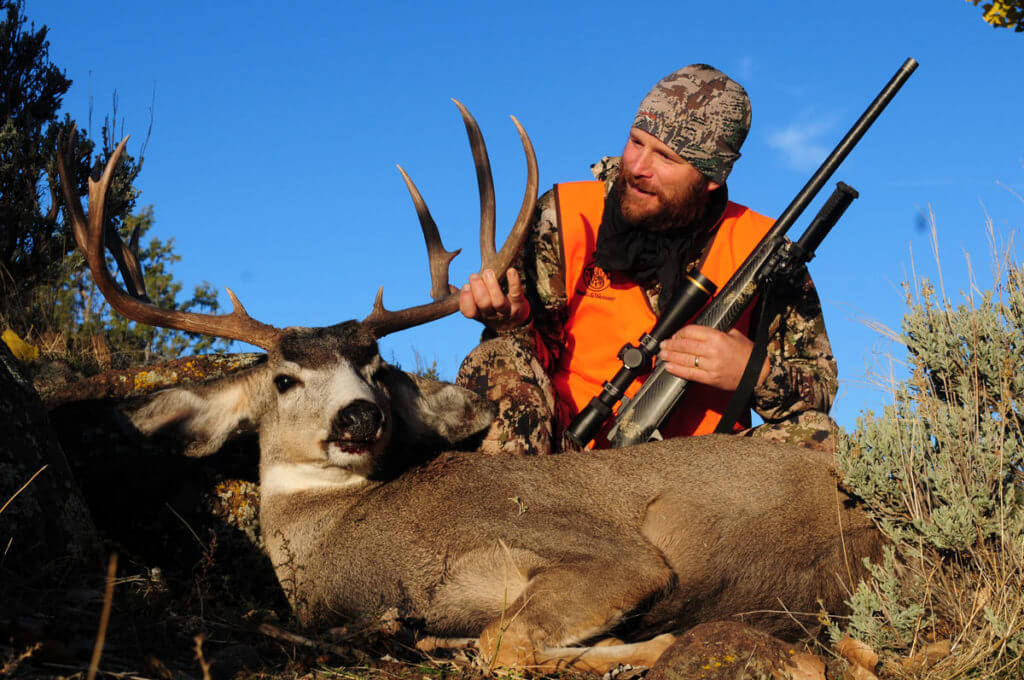
It’s early July. Velvet-covered deer and elk antlers are growing more massive every day, summer thunderstorms are beginning to build over the high country, and the fall hunting seasons are just a couple short months away. If you’ve been hankering after a great hunting rifle for stalking western big game, now is the time to make your move. There’s never a bad time for a good rifle but now is always the best time.
There are as many differing opinions on what makes a great western hunting rifle, as there are western hunters. One fellow wants a classic, lightweight rifle that balances like a Latin dancer; another wants a heavier modular rig that shoots tiny cloverleaf groups and settles onto the ground like a chunk of lead. One hunter wants cheap, another desires the finest quality available.
Personally, I hunt mostly on public-land and prefer to use the quads God gave me rather than an ATV. The best public-land hunting lies off the beaten path, so I usually hike or ride a horse miles from the nearest road. As a result, lightweight is important. I like quality and demand accuracy from my hunting rifles. Snow and storm doesn’t chase me indoors, so I need my hunting rifle to be weather-resistant. I’m a sucker for classic beauty and I love a well-balanced rifle. So here’s how to assemble the ultimate western hunting rifle according to my criteria. Unless you do most of your hunting from a truck and spend more money on your meals than your footwear, it’ll be just as awesome for you.

THE RIFLE
The foundation of your setup is, obviously, the rifle itself. Working from the criteria outlined above, here are the features you should look for in a western hunting rifle:
Lightweight: If a rifle is too heavy – above 6.5 pounds – automatically remove it from your list. It might be an awesome rifle, just not for western hunting. The last thing you need when you’re grinding up a near-vertical slope trying to keep up with a herd of elk is extra pounds. Ideally, look for a rifle that weighs closer to five pounds than six.
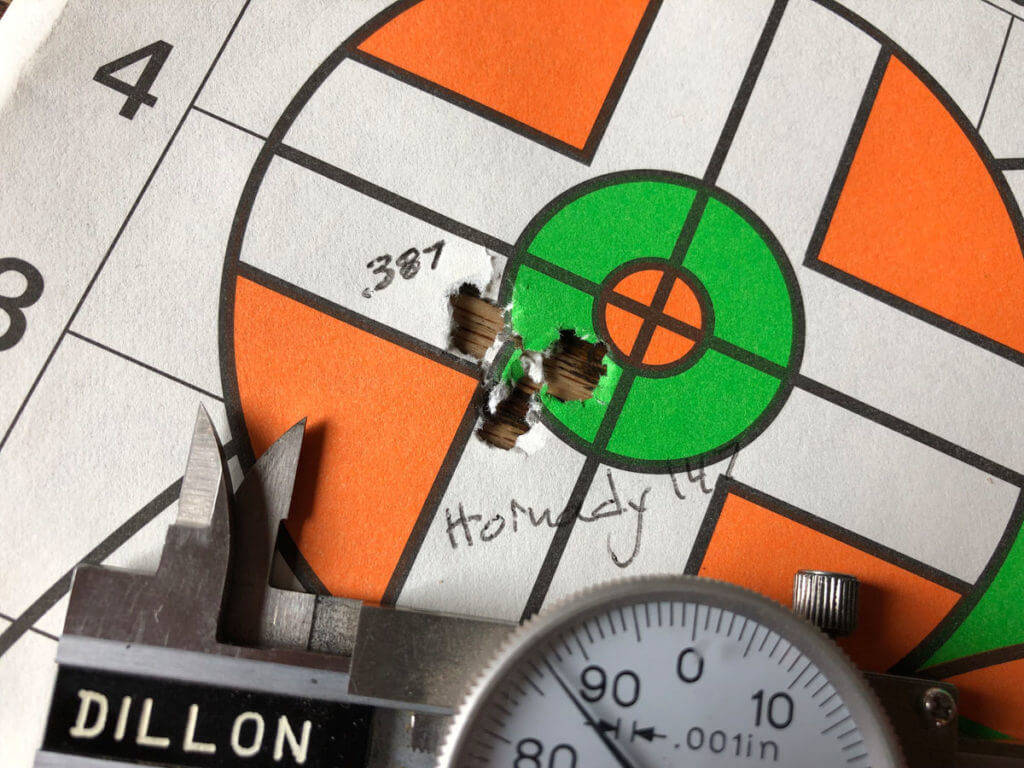
Accurate: I’ll admit I’m a bit of an accuracy snob. Rifles that offer only so-so accuracy lose my interest faster than tie-dyed tee shirts and heavy metal. You should look for a rifle that will shoot three-shot groups that average less than one minute of angle (MOA). That’s roughly an inch at 100 yards. My favorite hunting rifles will group inside three quarters of an inch (3/4 MOA).
Usually, you don’t have the opportunity to accuracy test a new rifle before you buy it, so your best strategy is to purchase a gun built by a company with a reputation for out-of-the-box accuracy. A few companies that I trust to deliver accurate new rifles are Browning, Kimber, Weatherby, Nosler, and, if money is not a concern and you desire top-tier, Gunwerks.
Trigger: You need a great trigger in your western hunting rifle. When the buck or bull of a lifetime gives you a fleeting shot opportunity the last thing you should be doing is fighting to get a clean trigger break. Bottom line? Unless your rifle has an awesome trigger already in it, buy and install a top-end trigger from TriggerTech or Timney.
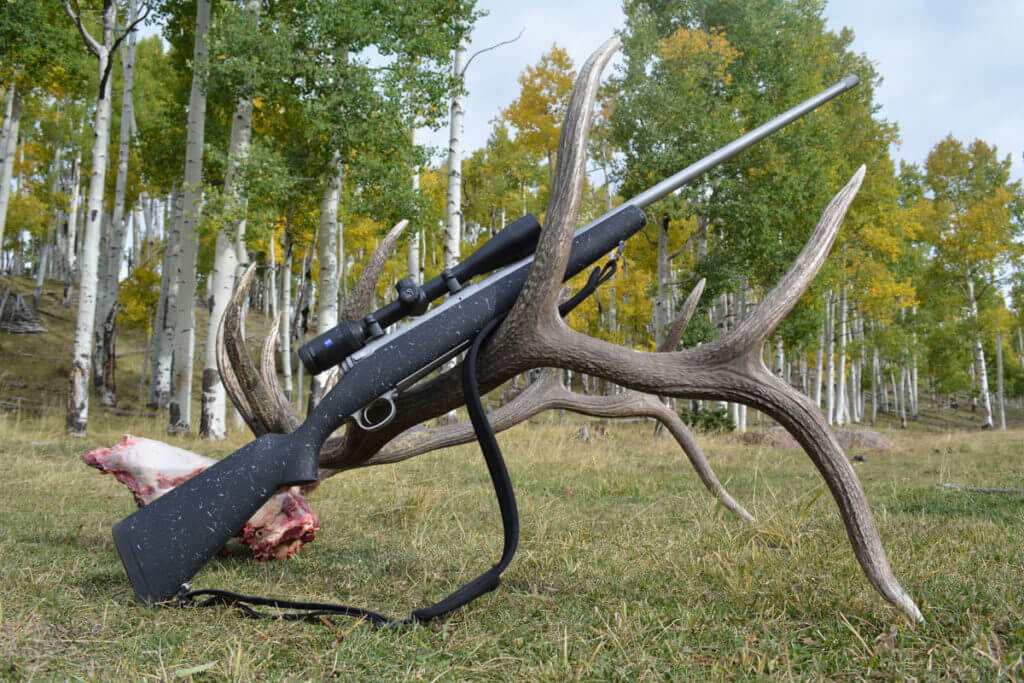
Durable: For best durability and weather resistance, look for a rifle built with stainless steel and carbon fiber. Both materials thumb their nose at inclement weather. Cerakote (a ceramic-based finish) on metal can enhance durability and appearance but is not necessary.
Design: If you’ll be hunting where grizzly bears share the territory, opt for a controlled-feed action. It might make the difference during a life-and-death encounter with an unreasonable bruin. If you’re not hunting grizzly country, either controlled or push-feed action design will serve you well.
I personally prefer the streamlined classical profile of traditional hunting rifle stocks, with no adjustable comb to hang on brush and twigs, and no beavertail forend to bulge my saddle scabbard. In my experience classic hunting stocks usually balance nicely as well, which is important both for carry-ability and rapid, accurate field shooting.
Barrel length should be kept between 22 and 24 inches. Less and you loose velocity, more and your rifle begins to become unwieldy.
Quality: My rifle is the single most important tool in my arsenal, and I’m not inclined to opt for cheap. You get what you pay for, and while there are some accurate, inexpensive rifles out there, they don’t offer the attributes I want in a western hunting rifle. Remember the title of this article. It’s “Ultimate”, not “Cheap”.
I expect to pay $1,600 to $3,500 for a rifle that meets my criteria, and if I want the Lamborghini option (Gunwerks), three times that amount. In return I know I’ll have a hunting rifle I can trust in any circumstances, and that will still shoot true when I pass it down to a grandchild.
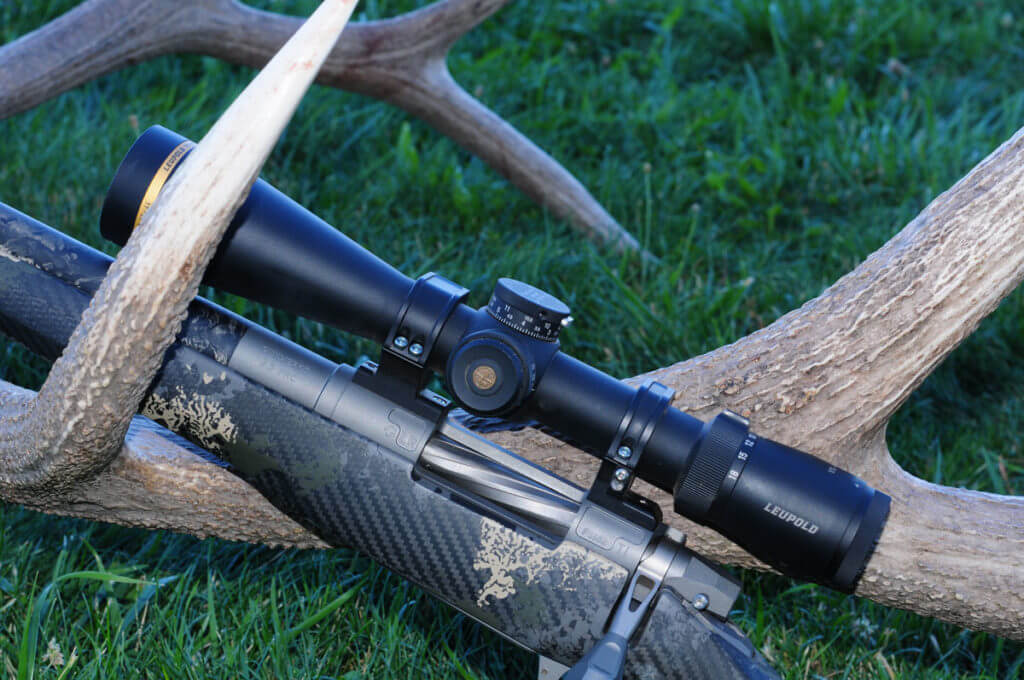
THE SCOPE
Your riflescope is the tool that connects your rifle with your target, and as such should be the highest quality you can afford. Zeiss, Trijicon, Swarovski, Leica, Nightforce, and others build great scopes, but in my personal opinion Leupold builds the best hunting riflescopes (largely due to their turret design). Any of the above brands will work very well. Look for these features:
Lightweight: There’s that word again. Trust me, it’s important. Giant, heavy scopes with 34mm tubes and magnification that rivals the Hubble Telescope are all the rage for precision and long range shooting, but believe me; they’re a long way from ideal for a western hunting rig. Look for a scope that weighs at or under 22 ounces.
Compact: Here again, big is unnecessary and inconvenient for western hunting. Select a scope that is compact and built around a one-inch or a 30mm tube.
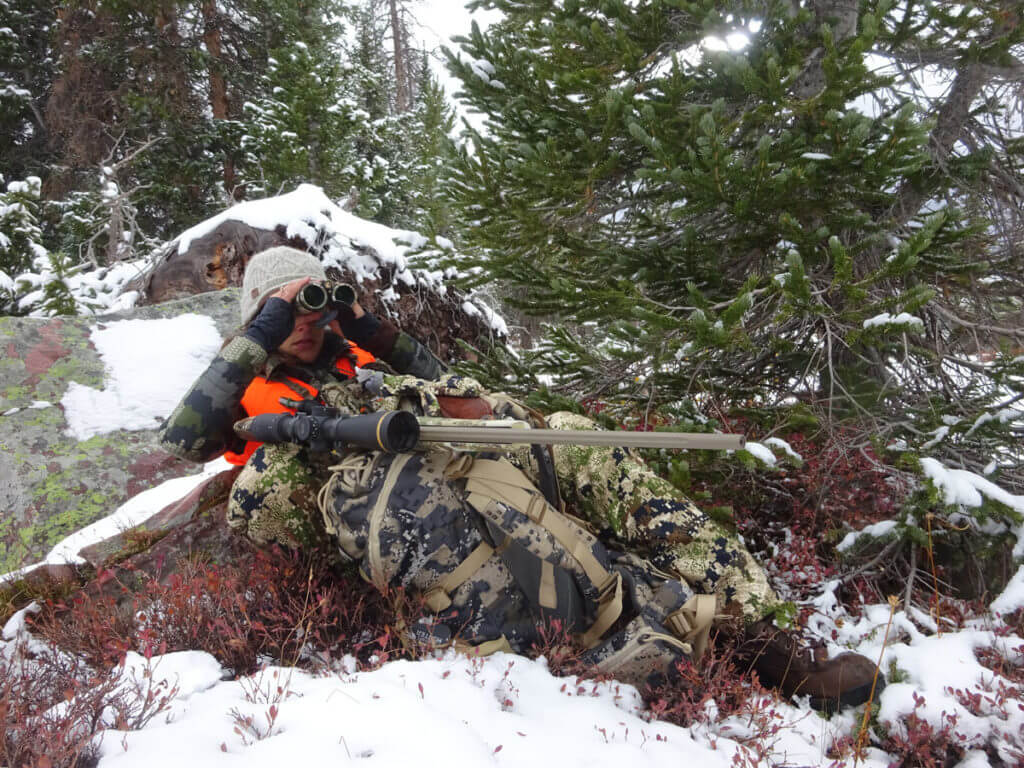
Magnification: Look for a scope with a low-end magnification of two-point-five or three-power. You need low magnification with its accompanying large field of view for those up-close opportunities that inevitably occur when you least expect them. Someday when you’re trying to get a bullet into a big bull elk in thick timber, you’ll thank me.
On the top end, you’ll want at least nine-power magnification, though up to 18 is better. My all-time favorite scope is 3–18 power. I can turn the scope down for up close hunting, or all the way up to 18-power and use it as a spotting scope. I turn it down to nine power for any long shot. This gives me a big enough field of view that I can stay on the animal through recoil, spot my impact, and execute a rapid follow-up shot, if necessary. If you shoot with your scope turned up higher than nine or 10 power you run the risk of loosing sight of your target during recoil. Then you’ll struggle to reacquire it afterward, due to the limited field of view at high magnification. That’s not a problem while shooting paper at the range, but it’s huge when shooting at game.
Objective lens: Anything larger than a 44mm objective lens is too big and bulky. It’ll get in the way, off-balance your rifle, and smack up against something every time you set the rifle down. That’s hard on your rifle’s zero. Big objective lenses (the front bell of your scope) should be left to target and bench shooters.
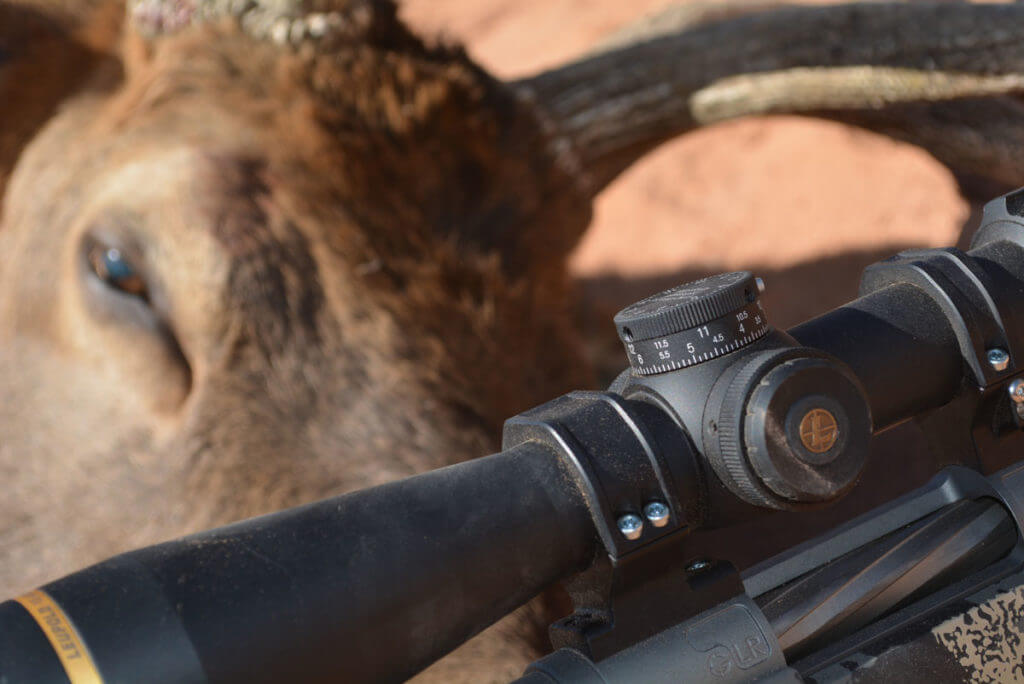
Turret: Long, open-country shots are common in the west, and a good dial-up turret with zero-stop or zero-lock type mechanism will serve you well. I like to add a yardage-marked turret as well, once I’ve broken the rifle in and chosen a load to use. Once you have worked up ballistic data for your setup (velocity, bullet weight, and BC, common temp, and altitude), you should contact the manufacture and they’ll help you order a yardage turret. Then all you need to do is range the target or animal, dial your turret to the corresponding range, and center the crosshairs for the shot. It’s awesome.
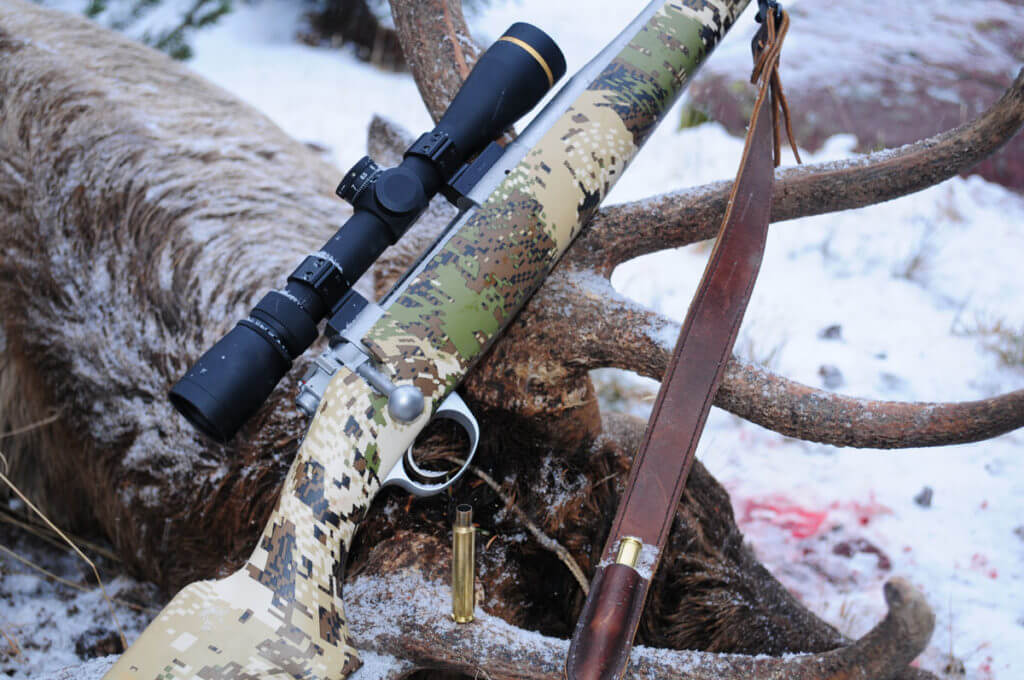
THE ACCESSORIES
Now that you’ve chosen your rifle and scope, all that’s left are the accessories.
Scope Mounts: Leupold, Weaver, Burris, Talley, and others all make awesome rings and bases. My favorite, go-to mounts for a western hunting rifle are Talley’s lightweight, one-piece alloy mounts. They are superbly strong and weigh next to nothing.
Carrying Sling: This little item is important because it aids you during long hours of carrying your rifle through rugged western big game country. Personally, I don’t like wide, cobra-style straps, because they tend to get in the way. Instead, try a one-inch or 1.25-inch wide sling made of leather or grippy rubber.
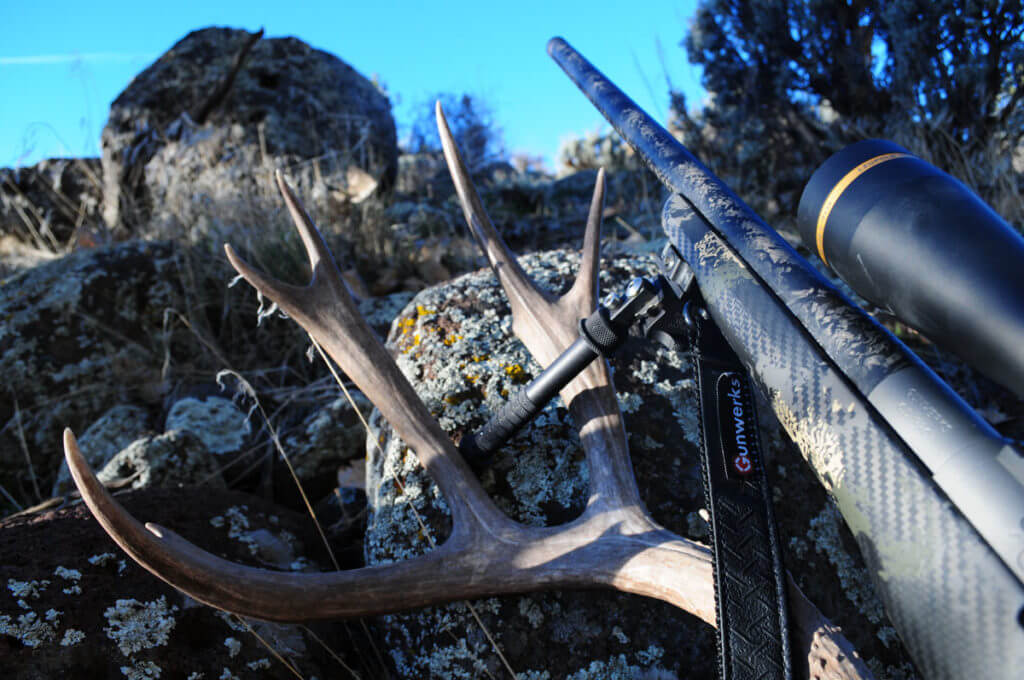
Bipod: A bipod is not necessary; you can throw your pack on the ground or atop a boulder and use it as a rest. Lately, though, I’ve grown fond of using a good bipod for longer shots. They simply add an element of stability that’s hard to accomplish any other way. I like the models by Atlas or Spartan Precision.
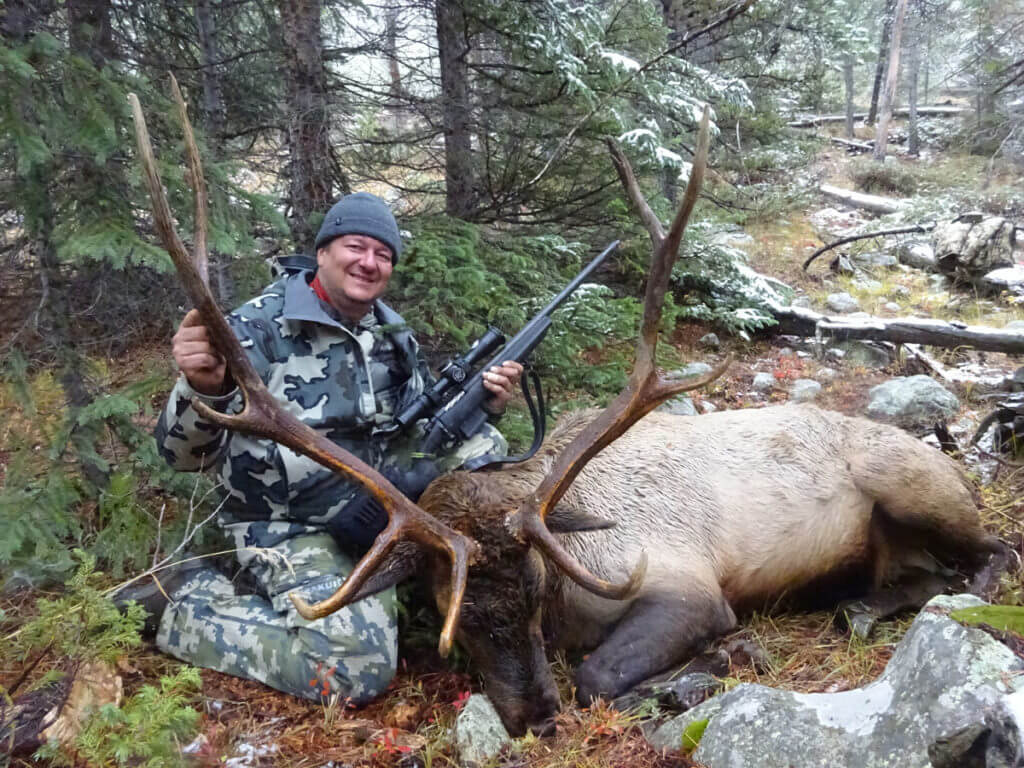
CONCLUSION
Once you’ve chosen and assembled your ultimate western hunting rifle, you are the final piece of the puzzle. Train with the rifle until it feels like an extension of you. You should be able to load and unload your rifle and check the turrets in the dark. When you shoulder the rifle your crosshairs should find the target automatically. Do extensive dry-fire practice from every imaginable field position. Learn where it shoots out to extended distances. Train to watch your impact through the scope while you cycle the bolt for an instant follow-up shot. When that western buck or bull of a lifetime shows up, you’ll be ready.